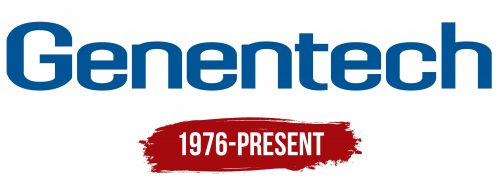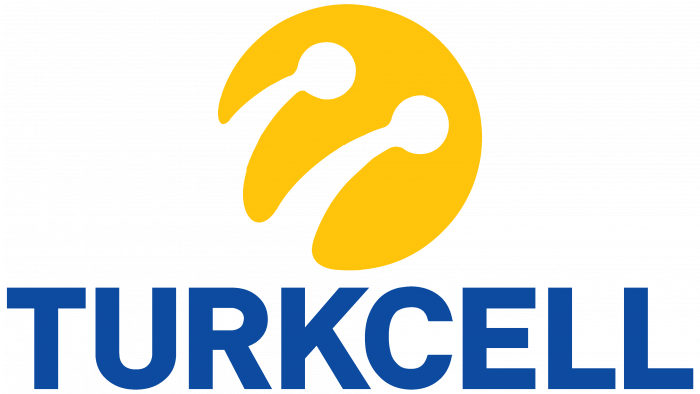The Genentech logo embodies reliability, stability, and high professionalism, reflecting the company’s core values. Clear lines and modern fonts create an impression of technological advancement and emphasize the scientific approach that underpins all of its solutions. The emblem highlights the importance of precision and the commitment to the company’s high standards.
Genentech: Brand overview
Genentech’s biotech company was founded in 1976 by biochemist Herbert Boyer and venture capitalist Robert Swanson. They aimed to use advancements in genetic engineering to develop groundbreaking medicines. Swanson, intrigued by Boyer’s work in recombinant DNA research, saw immense innovation potential. Boyer, a professor of biochemistry at the University of California, San Francisco, pioneered genetic modification, having co-developed a method to create genetically modified organisms. This breakthrough opened the door to large-scale production of proteins and other biological compounds with potential medical applications.
Swanson believed in Boyer’s ideas and made an initial investment of $1,000, leading to the official formation of the company on April 7, 1976. Swanson raised an additional $200,000 from venture investors in just a few months, allowing the company to start working on its first major project.
The company’s initial goal was ambitious: to use recombinant DNA technology to produce synthetic human insulin. A team led by scientists Keiichi Itakura and Arthur Riggs collaborated with the City of Hope National Medical Center to pursue this breakthrough. The first major success came in 1977 when the team used E. coli bacteria to produce somatostatin, a human hormone. While somatostatin didn’t have immediate medical applications, it proved that human proteins could be produced using genetic engineering.
In 1978, the team achieved a major milestone by successfully synthesizing human insulin using genetic engineering—the first human protein produced for medical use. This accomplishment garnered widespread attention from the pharmaceutical industry and the scientific community.
In 1979, the company signed a significant partnership with pharmaceutical giant Eli Lilly to manufacture and distribute recombinant human insulin. This partnership provided substantial financial backing and allowed the company to continue its research.
The company went public in 1980, and its initial public offering (IPO) was among the most successful in the biotechnology industry. Shares surged from $35 to $89 on the first trading day.
In 1982, the FDA approved Humulin, the first genetically engineered drug developed by the company and produced by Eli Lilly. This marked a turning point in the availability of genetically engineered medicines for patients.
Throughout the 1980s, the company continued to innovate. 1985, the FDA approved its first independently developed human growth hormone drug for treating childhood growth deficiencies.
The company saw significant growth in the 1990s, releasing major drugs like tissue plasminogen activator (tPA) for heart attack treatment and DNase for cystic fibrosis.
In 1999, Swiss pharmaceutical company Roche purchased a majority stake in the biotech firm, though it maintained its independence in research and development. The 2000s were notable for breakthroughs in oncology, with the development of Herceptin for breast cancer and Avastin for colorectal cancer. In 2009, Roche fully acquired the company for $46.8 billion, making it Roche’s U.S. research division. Despite the acquisition, the organization retained its innovative culture.
In the 2010s, significant strides were made in immunotherapy and personalized medicine, developing treatments that harness the immune system to fight cancer.
By 2023, the company will remain one of the world’s leading biotech firms, known for producing cutting-edge medicines for various diseases. Its evolution from a small startup to a global powerhouse demonstrates how scientific discovery and entrepreneurship can transform medicine and improve millions of lives.
Meaning and History
What is Genentech?
This California-based startup uses genetic engineering and advanced biological research to develop treatments for some of the most challenging diseases. The corporation offers treatments for autoimmune diseases, respiratory diseases, and several forms of cancer. The company’s strategy is focused on improving the lives of people suffering from serious illnesses by combining cutting-edge science with patient-centered thinking.
1976 – today
The Genentech logo is designed in a minimalist style that fully reflects its mission and field of activity. It consists of a single element—the brand name- in a simple font. Each character is created with clear, elongated ovals that give the text visual harmony and stability. These rounded forms convey precision and attention to detail, which are crucial for a company working in biotechnology and medicine.
The emblem’s font is chosen with an emphasis on proportion and the perfect shape of the letters. This highlights that bioengineering is a field where mistakes are unacceptable, and every step requires accuracy. The letters seem to represent a synthesis of life and innovation, symbolizing the company’s goal of creating advanced medicines to improve people’s lives.
The blue color of the visual mark is traditional for the medical field. It evokes associations with reliability, professionalism, and stability—essential for any company developing pharmaceutical products. The blue color underscores the brand’s reputation as an innovator in biotechnology, emphasizing that its products are reliable and meticulously developed.
The brand was established in 1976 when biotechnology began to evolve. In those years, the company was one of the first to recognize the potential of genetic engineering for creating new medical treatments. The company’s logo reflects this idea: the strictness of the form and color symbolizes responsibility to patients and society. At the same time, the modern and clean design represents the drive for innovation and transformation within the industry.





